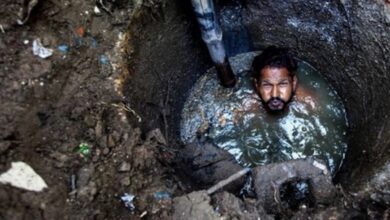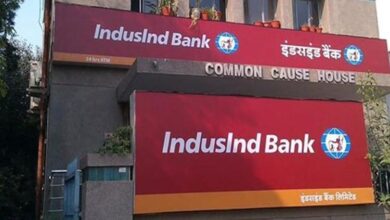Coronavirus Pandemic: A Tough Test For The Indian Internet Service Providers.

Students can’t go to schools, everyone is stuck at home attending classes online. Physical meetings cannot take place, people are using video calls as the means to seal the deal. All this is taking a toll on the internet service providers of India and all across the globe. These tests help the companies is in the best way possible.
The internet is the new normal. With the ongoing pandemic people cannot move from one place to another, they cannot go to their offices, they cannot go to their schools. Everything is happening over the internet.
The number of internet users in India has increased. The volume of traffic going from the customers to the servers has undergone a massive change. The download speed has decreased but at a slower pace. Netflix and YouTube announced that they would reduce the default bitrates of their video streams in Europe. Something on the similar grounds is happening all over the world.
The digital divide in India is increasing. People living in lower-income households, rural areas, and those living in less developed states get less reliable internet. There is no proper literacy data available in India which shows how many people can use the internet properly.
When networks are under usage strain life right now, it is quite natural that there is some level of slowdown. While the core of the intimate remain stable, some ISP networks may struggle to keep up. Amazon prime video, Netflix, Hotstar, and other video streaming platforms decrease their HD streaming services to SD in India for a month.
All the internet service providers and telecom operators are working very hard to provide adequate internet access to the customers. Plenty of them have also upgraded their systems to keep up the internet services.
The CEO of Airtel said that they have taken up several measures to improve the customer experience from upgrading the quality of service where possible to increasing their investments.
Vodafone-idea which is the second-largest telecom operator in the country also took various steps to ensure an active customer base. According to sources, a comprehensive pandemic response plan with the risk mitigation protocols has been activated.
There is one big hindrance to all this. The telecom operators and the internet service providers are sending their technicians to fieldwork whenever and wherever the connections are not stable. These technicians aren’t able to move past the curfew limits which have been set up by the states. These issues are arising because of the lockdown. The government has identified these technicians as a part of essential services but still they are advised to work from home.
Apart from this obstacle, various societies are not allowing these technicians to enter the premises. Some societies have strictly told the technician to not enter the boundary walls and fix the connections from outside.
Apart from this, the health of the workers is also very important. Vodafone-idea have mentioned that they have organized temporary stay arrangements at the data center locations for the critical locations.
There have been demands for new connections from all over the country. People now need much more data than they need it before. And executive from Excitel said that they have never seen this much growth in the last few years. The daily average enquiries for Spectra have also increased by 3.2 times in the last few weeks. When we talk about Airtel, customers are upgrading to faster networks and purchasing more data than ever.
In previous articles we have covered that the coronavirus will divide people like never before. The rich will survive while the poor will strive to sustain. Even when it comes to the Internet provision, the rich people who have an internet connection and have cell phones and laptops at home will be able to teach their children and undergo all their office work. People who can afford high-speed internet connections at an increasing rate will get more benefits than The ones who cannot afford all this. In the United States of America, more than 6% of the population do not have a high-speed connection. In Australia, this figure stands at 13%. These are some of the richest countries in the world and this is their scenario. Now imagine where India stands.
More than 1 billion children across the globe are not being educated currently because of the quarantine measures. And the number of teachers are taking classes online but these students cannot join those classes. Broadband speeds are also falling at a very high rate.
This quarantine will take a toll on the Indian internet service providers.
Internet infrastructure in India returns to technology has not achieved the state of quality where everyone can be offered the best services. The state and the private players in the education sector have not overcome these challenges until now. Due to lack of infrastructure, complete shifting to the online mode of education will never be a success in India. The government needs to step up and help the service providers because everything must be available at the click of a mouse. The only issue which is being faced by the education sector and the corporate sector is that the internet speed and the quality is not good. The sender and the receiver both know how to use it. So the hindrance here needs to be solved.
The government needs some regulatory and policy changes which would allow internet service providers to increase their capacity.
In India, there has been about 30% surge in consumption on an average. The internet speed has gone down by 20%. It is said that this will get worse with time because of the higher usage of the internet. In Bangalore and Hyderabad, cellular network data consumption has gone up by 70% the networks are not ready to take this level of increment. Even though the telecom operators and the government is working together to ensure that the network remains unchanged, even then the operators cannot tackle the reduced speed or the network congestion during the lockdown.
The myspeed application by the telecom regulatory authority of India collect the data by occasionally testing the internet speed on various smartphones of users who have installed the application. After this the authority merges six-month average results and makes raw data public. After analyzing the raw data, the median download speeds were reduced in March. This was the lowest monthly meeting and download speed in the last two years. The drop in the internet speed is seen in almost all the telecom operators like Airtel, Vodafone idea, Jio etc. The median download speeds on all these networks are at the all-time low.
The pandemic has made us understand the actual conditions of the country. Our country lacks the technological infrastructure but it aims to be independent. Because of a lack of technological infrastructure, various students are not being educated, various workers are not been able to work and some patients are not going to the hospitals. This is not how self-reliance works. The government needs to work on this and make sure that the best quality services are provided to the citizens.
This lockdown might be the biggest test of the telecom service providers and the internet service providers and as of now looking at the complaint, they are failing. But in the near future, we hope that they come out stronger than ever.




